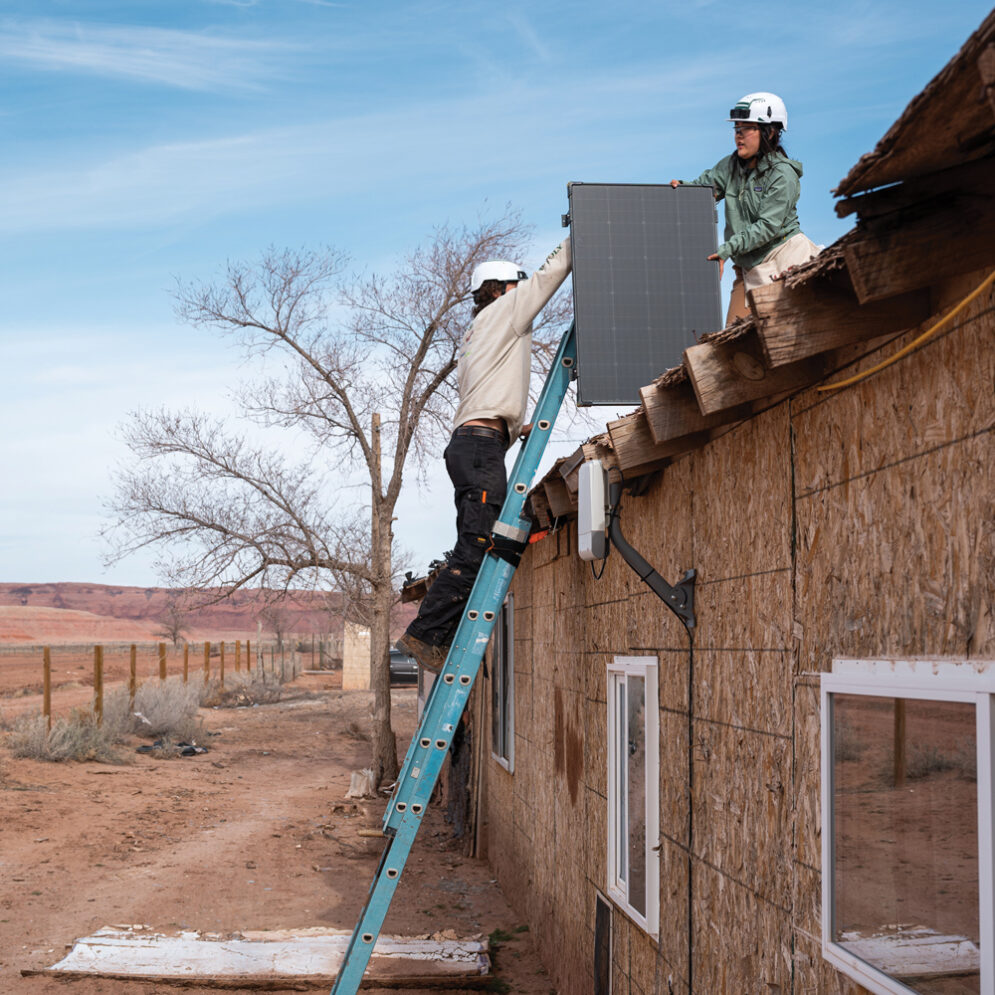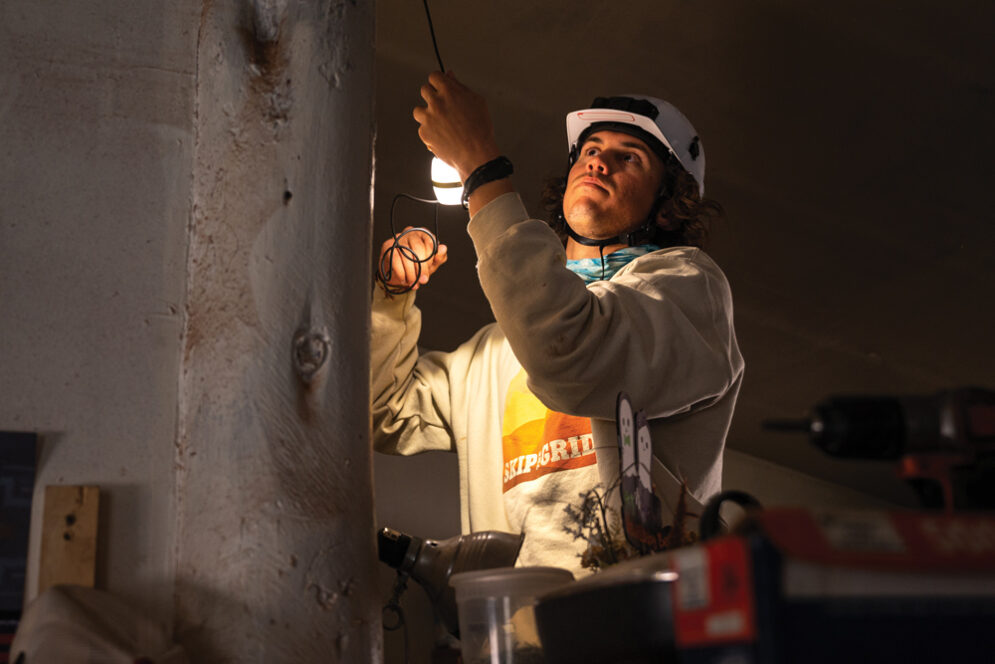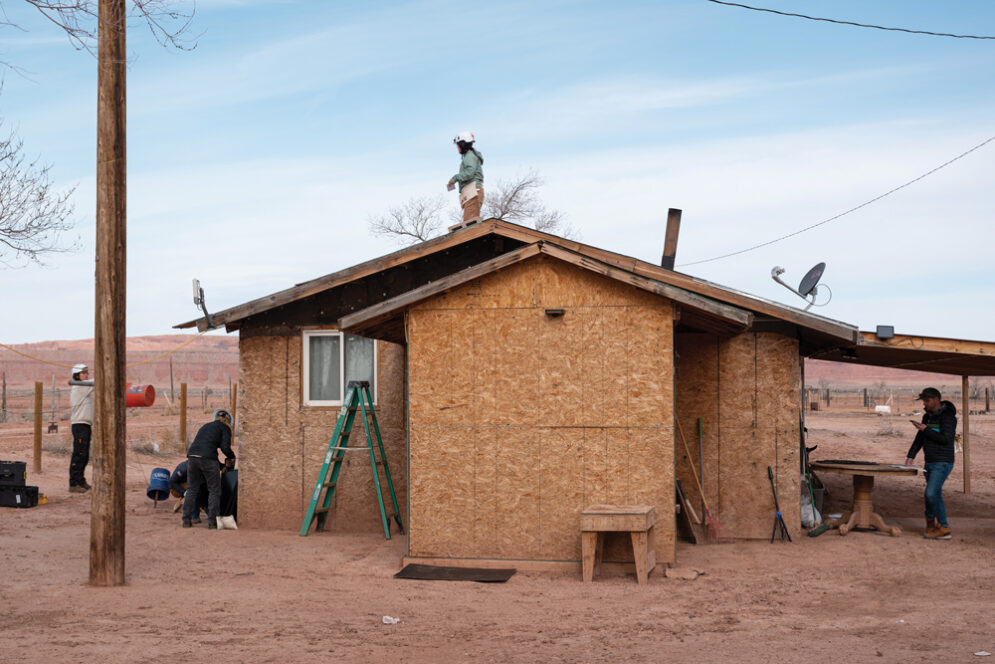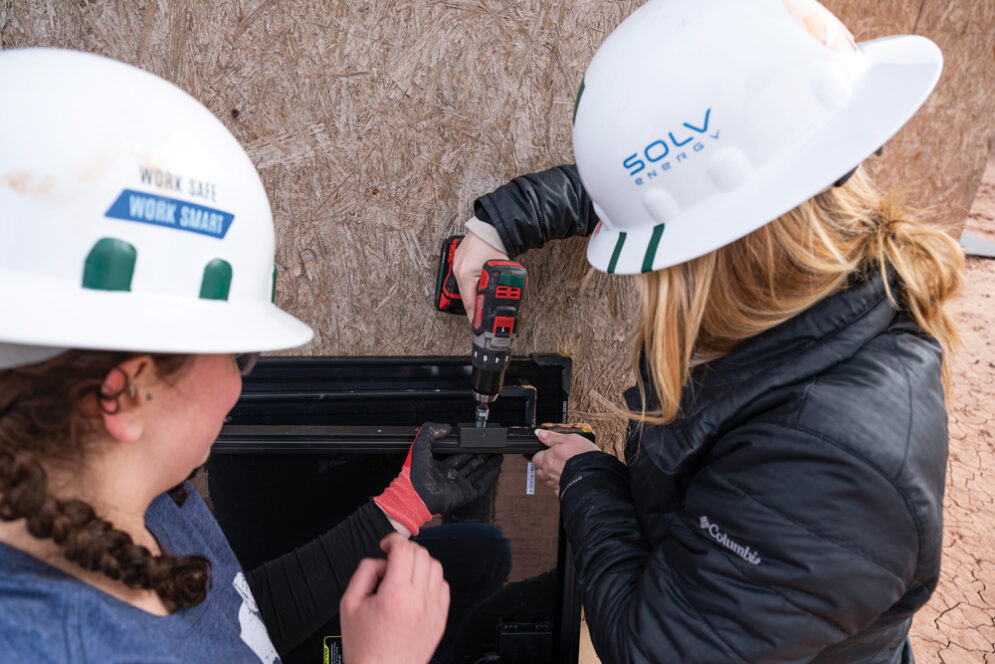Bright Lights in Navajo Nation
Meet the student team who worked to bring solar power to families in one Navajo Nation community.

Students Clinton Allen, left, and Gina Chun prepare to install a 100-watt solar panel onto a family’s roof.
Navajo Nation, which spans more than 27,000 square miles across three states, is the largest Native American reservation in the United States. This spring, Cal Poly students traveled to the Navajo community of Red Mesa, Arizona, to install solar panels for local families with limited or no access to power.
“Education equity is inextricably linked to energy equity — which became even more apparent during COVID-19,” said student project leader Heather Sailor. That’s because access to electricity allows people to do homework, access the internet and have more agency over an important resource.
The Construction Management Department partnered with the nonprofit organization Heart of America (HOA), which worked with the Red Mesa Unified School District to identify families with school-aged children in need of electricity access.
Sailor, who graduated this spring with a degree in construction management, was also involved in a previous trip Cal Poly students made to the region in 2022, where they installed solar-powered refrigerators.
“This project offered the ultimate Learn by Doing experience,” she said.
Students prepared for months in advance of the 2023 trip, splitting into groups focused on construction, education, systems and testing, fundraising, and cultural training. Additionally, all students went through cultural training to ensure a respectful experience.
About a month before they left for Arizona, the students began performing practice installations. Practice days consisted of getting familiar with safety protocols and the system’s equipment, which included four 100-watt solar panels, a battery with a built-in inverter, lights and connection components.
“It’s actually a rigorous preparation process because all the homes are located in a very remote area, far from hardware stores and hospitals,” said Gina Chun, a fourth-year construction management student.
A typical installation process went like this: a Heart of America representative would meet a group of students at a family’s home and introduce the students and family to each other. The Cal Poly students would then survey the home, determining the best placement for solar panels based on sunlight, stability of the roof and the lighting arrangement indoors.
Some student groups working at higher elevations were met with snowy or windy conditions that made installation more difficult, but because they had spent time practicing, the groups knew how to communicate and work together to get through it.
All families involved also received a run-through of how the system works and instruction manuals with diagrams of the solar panel battery and the appliances that can be used with it.
The students didn’t just focus on installations. They also presented a lesson on solar energy and renewable markets to more than 400 students from Red Mesa schools.
The students also provided follow-up assistance to families who received installations during the previous trip, bringing extra batteries and other needed replacement equipment.
Students are planning to return next year to continue installing solar panels and bringing renewable power to more residents. Some might also lead a class on building, management and design at Red Mesa High School, according to Sailor.
Recent architecture graduate Clinton Allen described the gratification he felt after completing the installations, explaining how thankful he felt to be allowed to work in Navajo space. Now that he’s entering the workforce, he hopes to do more humanitarian and community work.
“I definitely left that experience rethinking my desires in life and my career expectations or goals of what I should do,” Allen said.







